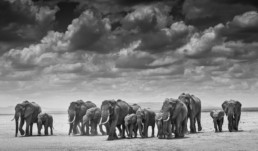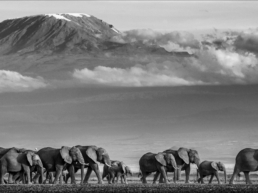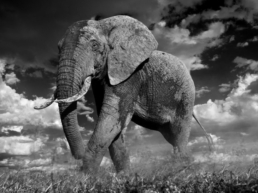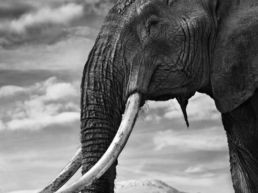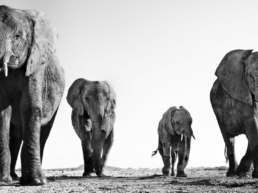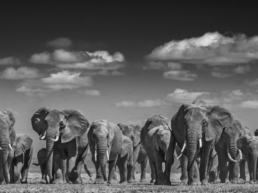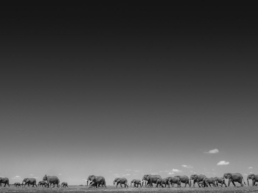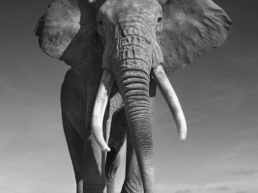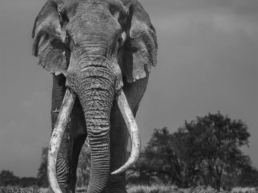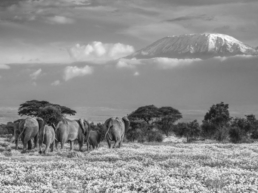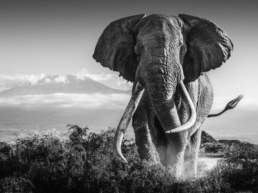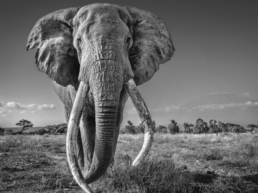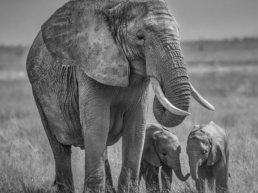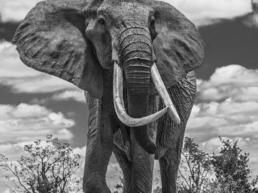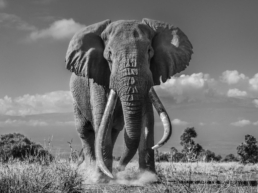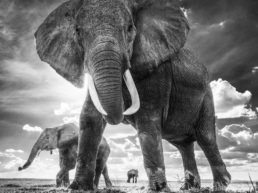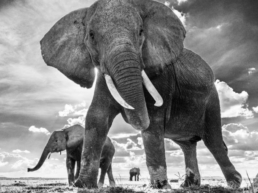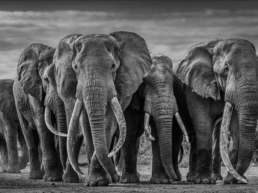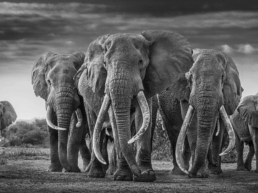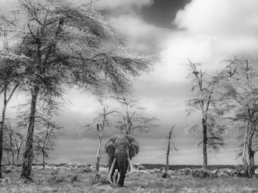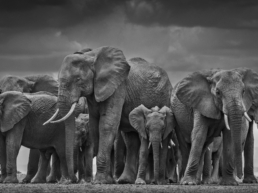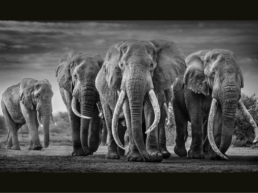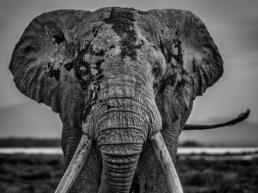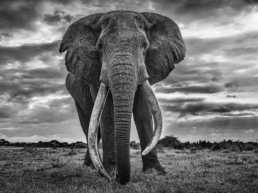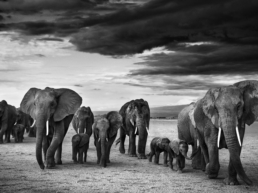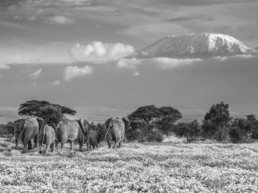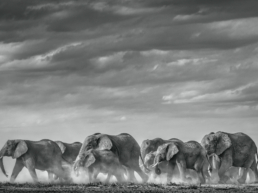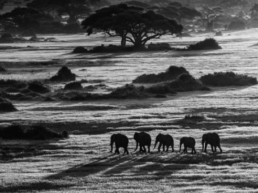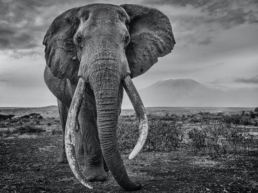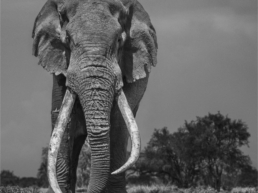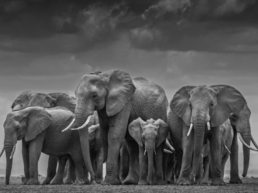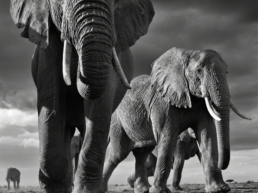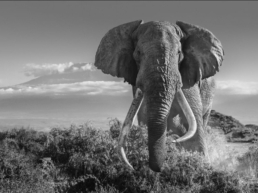Amboseli, Kenya 2015
This is a simple image – but its vastness lends it a biblical character – therein lies the joy of the dry lake at Amboseli. It is an arid, raw and elemental amphitheater, without equal as a canvas on which to film in Africa. These lake crossings are rarer now as the ecosystem has changed, largely due to the influx of the Maasai and their cattle. The one constant in Africa is that there is never inertia – habitat changes and animal and human behavior changes with it. It is the random walk of life.
As a result of the poor accord between cattle and elephants, there are not many cameras that have had this awesome scene in their line of fire over the last three years and I consider myself privileged. Equally, I have put in the time and know the area as well as any film maker. Looking at my notes, I have been on this lake on 47 occasions in the last three years and this is the biggest herd that has crossed during my visits. When our look out scouts saw the opportunity, we reacted very quickly. I don’t think that my guide and friend – Juma Wanyama – has ever driven quicker from base to the lake.
I think that big pictures need either transcending content that engages across much of the print, or the use of space to create a distinct sense of place. The Crossing is a hybrid of these two dynamics – the herd offers as magnificent an animal collective as today’s natural world can offer – big tuskers in good numbers with their young. As the affiliated photographer for TUSK, the UK based conservation charity, I have witnessed some desperate sights in subSaharan Africa – no more so than the field operation on the rhino Hope after she had been butchered to within an inch of her life by poachers. But there are also uplifting stories and the stability of the elephants in Amboseli is one – only one elephant from a resident population of 1200 has been killed by poachers this year.
But the image is a product of not just the elephants, but also the sky. My camera metadata informs me that it was taken at 11.50 am – possibly about the worst time to photograph any thing near the equator – high midday suns are not a camera man’s friend. On this day, however, the sky was full of fluffy cloud cover and the light was not stark, but contextual. The darker rain clouds were also starting to assemble – as often happens at lunchtime at the start of the rainy season. This was good fortune, but that is also why I regard late October in Amboseli as prime season.
This is the best place in the world to photograph African elephants, as emphatically demonstrated by The Crossing. It is a timeless image that I cherish.
Available Sizes (Framed Size)
- SOLD OUT
We ship worldwide and use a multitude of providers to safely deliver your artwork. Domestic delivery and installation may also be available via Hilton Asmus Contemporary’s private art shuttle. Please inquire.

